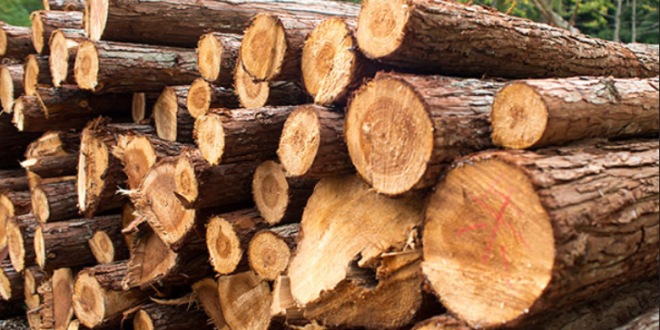Timber is a cornerstone of construction and design, celebrated for its versatility, strength, and natural beauty. Whether you’re building a new home, renovating an old one, or tackling a DIY project, understanding timber can make a significant difference in the quality and durability of your work. In this comprehensive guide, we’ll explore what timber is, its various types, and how to select the right timber for your needs.
What is Timber?
1. Definition and Uses
Overview:
Timber, also known as lumber, refers to wood that has been processed and prepared for construction and various applications. It comes from trees and is used in everything from building homes to crafting furniture.
Key Uses:
- Construction: Used for framing, flooring, and roofing.
- Furniture Making: Ideal for crafting tables, chairs, and cabinets.
- DIY Projects: Versatile for various home improvement tasks.
2. Types of Timber
Overview:
Timber is classified into two main categories based on its origin: hardwood and softwood. Each type has unique properties and uses.
Types of Timber:
- Hardwood: Comes from broad-leaved trees like oak, maple, and walnut. Known for its durability and density, hardwood is often used in high-quality furniture and flooring.
- Softwood: Derived from coniferous trees such as pine, spruce, and cedar. Generally lighter and easier to work with, softwood is commonly used in construction and general carpentry.
Benefits of Using Timber
1. Environmental Sustainability
Overview:
Timber is a renewable resource and can be sustainably sourced when harvested responsibly. It has a lower carbon footprint compared to many other building materials.
Environmental Benefits:
- Carbon Sequestration: Timber absorbs carbon dioxide from the atmosphere, reducing greenhouse gases.
- Renewable Resource: With proper management, timber can be replenished more quickly than non-renewable resources.
2. Aesthetic Appeal
Overview:
Timber offers a warm, natural look that adds character and beauty to any space. Its unique grain patterns and colors make each piece distinct.
Aesthetic Benefits:
- Versatility: Complements various architectural styles, from rustic to modern.
- Natural Beauty: Adds warmth and texture to interiors and exteriors.
3. Durability and Strength
Overview:
When properly treated and maintained, timber can be incredibly durable and strong. It’s suitable for a wide range of structural and decorative applications.
Durability Benefits:
- Load-Bearing: Capable of supporting significant weight, making it ideal for structural components.
- Longevity: Can last for decades with proper care and treatment.
How to Choose the Right Timber
1. Consider the Project Requirements
Overview:
Different projects require different types of timber based on their specific needs and conditions.
Project Tips:
- Structural Uses: Opt for strong, durable hardwoods or treated softwoods.
- Decorative Uses: Choose hardwoods for fine furniture or detailed cabinetry.
2. Understand Timber Grades
Overview:
Timber is graded based on its quality, strength, and appearance. Understanding these grades helps ensure you select the right material for your project.
Timber Grades:
- Structural Grades: For load-bearing and construction purposes.
- Appearance Grades: For aesthetic applications where the visual quality is important.
3. Check for Treatment and Maintenance Needs
Overview:
Some timber requires special treatment to enhance its durability and resistance to pests and weather conditions.
Treatment Tips:
- Preservative Treatment: For outdoor use, such as decking or fencing.
- Finishing: For indoor use, applying varnishes or oils to protect and enhance the appearance.
FAQ About Timber
Q: What is the difference between hardwood and softwood?
A: Hardwood comes from deciduous trees with broad leaves and is typically denser and more durable. Softwood comes from coniferous trees with needles and cones and is usually lighter and easier to work with.
Q: How can I tell if timber is sustainably sourced?
A: Look for certifications such as the Forest Stewardship Council (FSC) or Programme for the Endorsement of Forest Certification (PEFC) labels, which indicate that the timber has been sourced responsibly.
Q: Can timber be used for outdoor projects?
A: Yes, but it often requires treatment to withstand outdoor conditions. Options include pressure-treated timber or naturally resistant species like cedar or redwood.
Q: How should I maintain timber to ensure its longevity?
A: Regular maintenance includes cleaning, inspecting for damage, and applying protective finishes or treatments to prevent rot, pests, and weathering.
Q: What are some common timber defects to watch for?
A: Common defects include warping, splitting, knots, and discoloration. It’s important to inspect timber carefully before use and select high-quality materials to avoid these issues.
Read more Discover Desenio: Elevate Your Home Decor with Stylish Prints and Posters
Conclusion
Timber remains one of the most versatile and valued materials in construction and design. Its natural beauty, strength, and sustainability make it an excellent choice for a variety of applications. By understanding the different types of timber, their benefits, and how to choose the right kind for your projects, you can make informed decisions that enhance both the functionality and aesthetics of your space.

